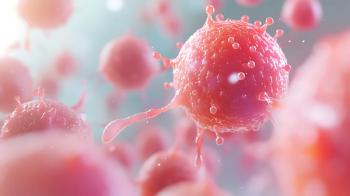
Breast Cancer Biomarkers Address Ethnic, Racial Disparities, Improve Treatment Response
Study results show significant differences in pCR rates, but the differences were not subtype-specific.
Using biomarkers for the treatment of
The study included individuals with stage 1 to 3 breast cancer who were diagnosed between January 2010 and December 2017. They also underwent surgery and received neoadjuvant chemotherapy, including a median follow-up of 5.8 years, with an analysis conducted between August 2021 and January 2023.
They included 107,207 individuals, with a median age of 53.4 years, with 5009 Asian or Pacific Islander, 9724 Hispanic, 18,417 non-Hispanic Black, and 74,057 non-Hispanic white.
The data were obtained through the National Cancer Data Base.
Investigators modeled pathologic complete response (pCR), using logistic regression. The ethnic and racial differences in survival were analyzed with a Weibull accelerated failure model, according to investigators.
An analysis was used to measure if ethnic and racial differences in the pCR could affect survival.
The overall rate of pCR was 25.6% for the whole cohort.
Investigators found that there were significant differences in pCR rates for ethnic and racial differences, but the differences were not subtype-specific. For hormone receptor-negative (HR-)/erb-b2 receptor tyrosine kinase 2 (ERBB2, formerly HER2)-positive subtype, those who were Asian and Pacific Islander achieved the highest pCR rate at 56.8%, followed by Hispanic individuals at 55.2%, non-Hispanic White individuals at 52.3%, and Black individuals at 44.8%.
In triple-negative breast cancer, Black individuals had a lower pCR rate at 27.3% than other ethnic and racial groups, which were all higher than 30%.
In HR+/ERBB2- subtype, Black individuals had a higher pCR rate at 11.3% compared with other ethnic and racial groups at 10% or less.
However, the differences were not statistically significant after adjusting for clinical factors, investigators noted.
Additionally, they found that tumor grade was the main mediator of association between pCR and race.
In mediation analysis, investigators suggested that the ethnic and racial differences in achieving pCR after neoadjuvant chemotherapy could explain approximately 20% to 53% of the subtype-specific survival differences across these groups.
Investigators also found that individuals with less than 31 days from diagnosis to initiation of neoadjuvant chemotherapy were more likely to achieve pCR than those experiencing longer treatment delays.
Achieving pCR after neoadjuvant chemotherapy was a significant prognostic factor for overall survival (OS), with a 5-year survival rate of 94%. After residual disease, the number decreased to 80%.
Across ethnic and racial groups, investigators found significant disparities in OS for all 4 subtypes for those with residual disease, with Black individuals having the highest mortality risk.
Further studies are suggested by investigators to further assess these disparities.
A limitation of the study included that a central pathology review was not performed to confirm pCR and neoadjuvant chemotherapy, given the type of registry investigators used for the data.
Reference
Shubeck S, Zhao F, Howard FM, Olopade OI, Huo D. Response to treatment, racial and ethnic disparity, and survival in patients with breast cancer undergoing neoadjuvant chemotherapy in the US. JAMA Netw Open. 2023;6(3):e235834. doi:10.1001/jamanetworkopen.2023.5834
Newsletter
Stay informed on drug updates, treatment guidelines, and pharmacy practice trends—subscribe to Pharmacy Times for weekly clinical insights.








































































































































































































